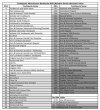- Joined
- Feb 20, 2015
- Messages
- 2,707
Another thing u can try without taking it apart is clean all lock surfaces and ball track as best u can with luke warm water, a few drops of dish soap and a toothbrush. Rinse of with warm water.
And then a quick spray with ballistol in towards the lockbar and pivot. One quick spray is more than enough. Then work it a little while whiping of excess oil for a few minutes.
This also works if the track is starting to feel a little gritty.
And then a quick spray with ballistol in towards the lockbar and pivot. One quick spray is more than enough. Then work it a little while whiping of excess oil for a few minutes.
This also works if the track is starting to feel a little gritty.

